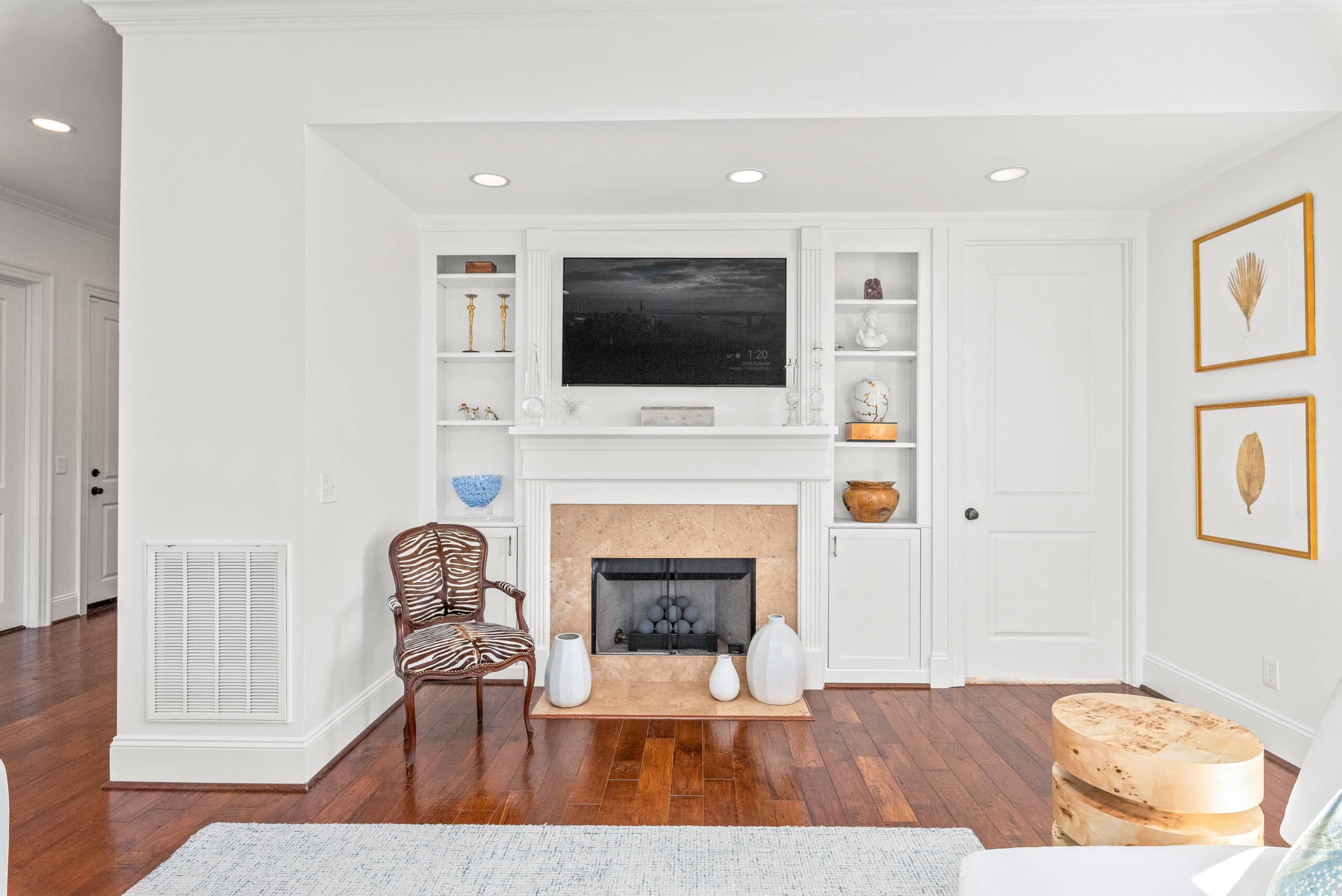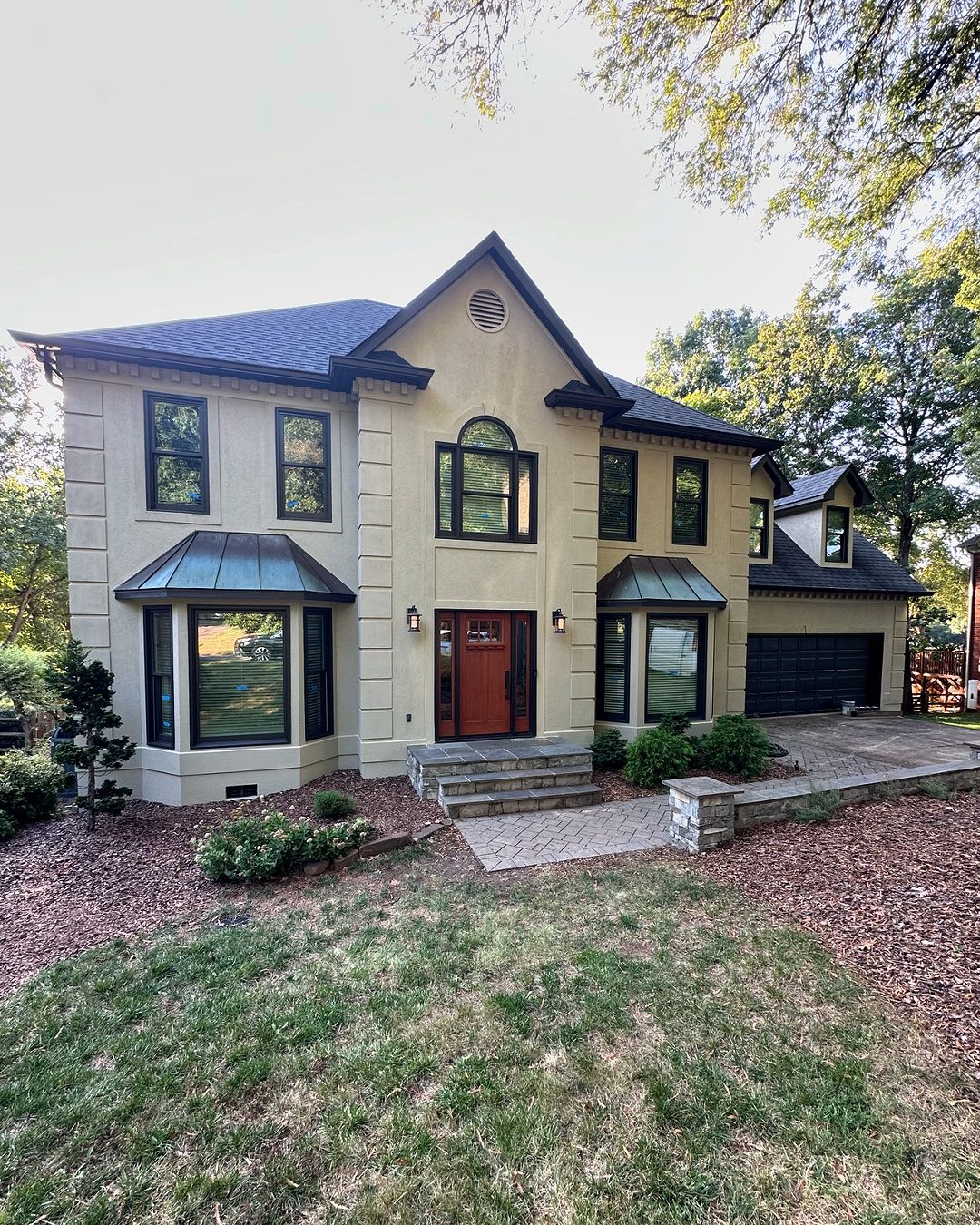An interior repaint isn’t just about aesthetics. For landlords, leasing agents, and property managers, it’s a key tool in maximizing rental property value, reducing vacancy time, and controlling long-term maintenance costs. The difference between scrambling to interior repaint after each tenant and having a repaint plan in place can mean days—or even weeks—of lost rent.
Reactive interior repainting is expensive. It leads to unplanned labor, inconsistent finishes, and poor paint longevity. On the other hand, a well-designed interior repainting plan helps ensure every unit is lease-ready faster, every paint job lasts longer, and every dollar spent on paint gets its full return.
This guide will show you how to build a paint strategy that works—room by room, unit by unit, turnover after turnover.
Key Goals of a Tenant Turnover Repainting Plan

Protect Asset Value
Walls, ceilings, baseboards, and even cabinetry take a beating between tenants. A quality paint system acts as a shield. It protects drywall from moisture intrusion, seals odors and stains, and extends the life of surfaces beneath.
Neglecting regular interior repaints can lead to:
-
Stained or peeling walls that require complete replacement
-
Softened or mold-prone drywall due to moisture exposure
-
Wood trim and cabinetry that warp or rot when unsealed
In short, paint protects the building envelope—keeping expensive substrate repairs at bay.
Reduce Downtime Between Leases
Every day a unit sits empty is a revenue loss. A repainting plan helps minimize vacancy by ensuring:
-
Paint products and colors are standardized and on-hand
-
Touch-ups and full repaints are scheduled in advance
-
Crews are trained and ready to paint within 24–48 hours of move-out
Strategic repainting avoids redundant labor. For example, touch-ups can be done without needing to move furniture. Full repaints can be completed while cleaners or handymen work in other rooms. This orchestration shaves days off turnover time.
Enhance Marketability
Tenants notice fresh paint—and associate it with cleanliness and quality. A well-executed interior repaint boosts perceived value and helps units lease faster.
Neutral, modern tones (think warm grays, soft taupes, or clean whites) create a blank canvas tenants can picture themselves in. More importantly, durable, scuff-resistant finishes maintain that fresh look longer, even with frequent cleaning or high-traffic use.
What to Include in a Repainting Plan for Rentals
Standardized Paint Colors and Finishes
Choosing one or two neutral colors for all units streamlines touch-ups, lowers paint waste, and creates visual consistency across your property portfolio. Avoid trendy or niche colors that may fall out of favor—or be difficult to match later.
Recommended finishes by room:
-
Living areas, bedrooms: Eggshell or satin
-
Kitchens and bathrooms: Satin or semi-gloss (moisture- and grease-resistant)
-
Trim and doors: Semi-gloss or high-durability enamel
Top commercial-grade paints for rentals:
| Brand | Product Line | Key Features |
|---|---|---|
| Benjamin Moore | Ultra Spec 500 | Zero-VOC, durable, commercial-rated |
| Sherwin-Williams | ProMar 200 Zero VOC | Economical, good touch-up consistency |
| BEHR | Scuff Defense | Budget-friendly, high scuff resistance |
Paint System Documentation
A paint system log ensures consistent application and simplifies future maintenance.
Each unit file should include:
-
Paint brand, line, and color code
-
Sheen level used for each surface
-
Date of last full interior repaint or touch-up
-
Notes on primer or specialty coatings (e.g., mold-resistant)
Use this log to determine when a unit needs full repainting, or when a quick touch-up will suffice.
Lifecycle Budgeting
Interior repaints are an investment, and budgeting ensures no surprises during turnover.
General lifecycle costs:
-
Touch-up paint job: <$300/unit (1–2 rooms, light patching)
-
Full interior repaint: $1,200–$2,000/unit (includes ceilings, trim, prep)
Average repaint cycle:
3–5 years per unit, depending on tenant behavior and paint quality.
Plan to touch-up high-traffic zones annually or between heavy-use tenancies.
Determining When to Repaint Between Tenants

Inspection-Based Criteria
Don’t repaint blindly. Use an inspection checklist at move-out:
-
Are walls scuffed, stained, or yellowed?
-
Is there nicotine or cooking residue on ceilings?
-
Is trim chipped, worn, or painted over?
-
Are patched areas visible without primer or paint?
This helps determine whether the interior repaint is cosmetic or protective. In moisture-prone areas like bathrooms or basements, repainting becomes a preventative measure against mold and mildew.
Tenant Wear-and-Tear Categories
Tenants vary widely. Categorizing their usage helps predict paint needs:
| Tenant Type | Typical Wear | Repaint Notes |
|---|---|---|
| Short-term rental | Minimal | May need only touch-ups |
| Pet owners | Scratches, odors, wall rubs | Repaint needed every 2–3 years |
| Smokers | Nicotine stains, odors | Requires ceiling and wall attention |
| Families with kids | Wall scuffs, handprints, dings | Prioritize satin finishes and scuff resistance |
Choosing the Right Paint for Tenant Durability
Paint Types and Features That Reduce Future Maintenance
Durability pays off. The right interior repaint product can cut maintenance calls, reduce turnover time, and save repaint cycles.
Ideal features to look for:
-
Scuff resistance: Resists marks from shoes, bags, and furniture
-
Washability: Allows cleaning without damaging the finish
-
Low-VOC or Zero-VOC: Fast reoccupancy and safer air quality
-
Mold and mildew resistance: Especially for kitchens, bathrooms, basements
Paint Systems Designed for Property Managers
Look for contractor-grade or maintenance-specific paint lines:
-
Sherwin-Williams Property Solutions: Offers volume pricing and consistent supply
-
Benjamin Moore Ultra Spec Series: Commercial formulation, easy touch-up
-
Behr Pro i300/i100: Designed for quick turnovers with decent coverage
Some systems now include Color Lock technology or additives that allow for better touch-up blending—even after aging. This is crucial when doing minor repairs between long-term tenants.
Managing the Painting Workflow Efficiently
Establishing a Painting Vendor Relationship
Painting contractors are not all the same. For turnovers, prioritize vendors who:
-
Understand turnover urgency (24–48 hr SLAs)
-
Can work flexibly with your team or leasing schedule
-
Use your standardized products and prep methods
-
Offer volume discounts or unit pricing
A professional vendor can prep walls, prime, paint, and even caulk or patch in one visit—if the plan is clear.
Sequencing Work with Cleaning, Repairs, and Marketing
The order of tasks matters for speed and quality. Avoid rework by following this flow:
-
Damage inspection (document condition and needs)
-
Cleaning (so painters don’t trap dirt or grease under new paint)
-
Repairs and patching
-
Priming patched areas
-
Painting (walls, trim, ceilings)
-
Photos and listings after dry time
Overlapping teams (painters in bedrooms while cleaners work in kitchens) can reduce your turnover window by 2–3 days.
Tenant Move-Out to Move-In: Timing the Interior Repaint Window

Here’s a sample timeline to integrate painting into a typical 7-day turnover cycle:
| Task | Timeline | Notes |
|---|---|---|
| Final tenant walk-through | Day 1 | Document all paint-related damage |
| Cleaning and patchwork | Days 2–3 | Ensure walls are dry and prepped |
| Painting | Days 4–5 | 2BR units typically take 1–2 days |
| Listing/photo prep | Days 6–7 | Allow at least 24 hours of dry time |
For large portfolios, staging these by floor or wing can keep maintenance and leasing teams moving in parallel.
Common Mistakes to Avoid in Turnover Repainting
Using Inconsistent Paint Colors or Finishes
Switching brands or sheens from unit to unit leads to visible patchwork. Worse, it makes touch-ups near impossible. Even “white” varies between brands.
Use one brand, one product line, and one set of color codes across your property.
Skipping Primer on Patched Surfaces
Quick fixes often ignore primer, but joint compound or drywall repairs absorb paint unevenly. Without primer, these areas “flash”—showing dull spots or color shifts under light.
Use a stain-blocking or bonding primer for patches and high-risk areas.
Overuse of Flat Paint
Flat paint touches up well—but that’s where the pros end. It stains, scuffs, and fades quickly. In rental units, satin or washable matte is a better default for walls.
How Paint Plans Reduce Long-Term Maintenance Costs
Avoid Emergency Interior Repaints
Rushed repaints delay listings and cost more per square foot. A plan allows bulk scheduling, better pricing, and more efficient use of crews.
Lower Cost Per Year When Cycled Properly
Let’s compare paint types by lifespan and annualized cost:
| Paint System | Cost | Lifespan | Cost/Year |
|---|---|---|---|
| Cheap contractor paint | $800 | 2 years | $400 |
| Mid-grade durable paint | $1,200 | 5 years | $240 |
Over five years, quality paint with a longer cycle reduces costs—and units look better throughout.
People Also Ask: Interior Repaint FAQ
Should I repaint after every tenant leaves?
Not always. Use an inspection to decide. If there’s heavy staining, odor, or damage—yes. Otherwise, a touch-up may suffice.
What paint finish is best for rentals?
Use eggshell in living areas, semi-gloss in baths and kitchens. Avoid flat paint in any high-traffic zones.
Can I deduct repainting costs as a landlord?
Yes. Interior repainting is often a deductible maintenance expense under IRS guidelines—but always check with your tax professional.
How long does interior paint last in rentals?
Typically 4–6 years for quality paint with moderate use. But high-use areas may need spot touch-ups yearly.
Repainting Plans Are an Investment, Not an Expense
A strategic interior repainting plan ensures fewer surprises, faster lease-ups, and lower maintenance bills. With standardized products, timelines, and vendor relationships, repainting becomes a tool—not a hassle.
You’ll get:
-
Faster tenant turnover
-
Lower labor costs per year
-
Longer-lasting interiors
-
A better tenant experience
Want a faster, cleaner, and more profitable repaint cycle? Schedule a property-wide paint assessment or get a quote tailored to your unit count and turnover rate. A few hours of planning today can save thousands tomorrow.




